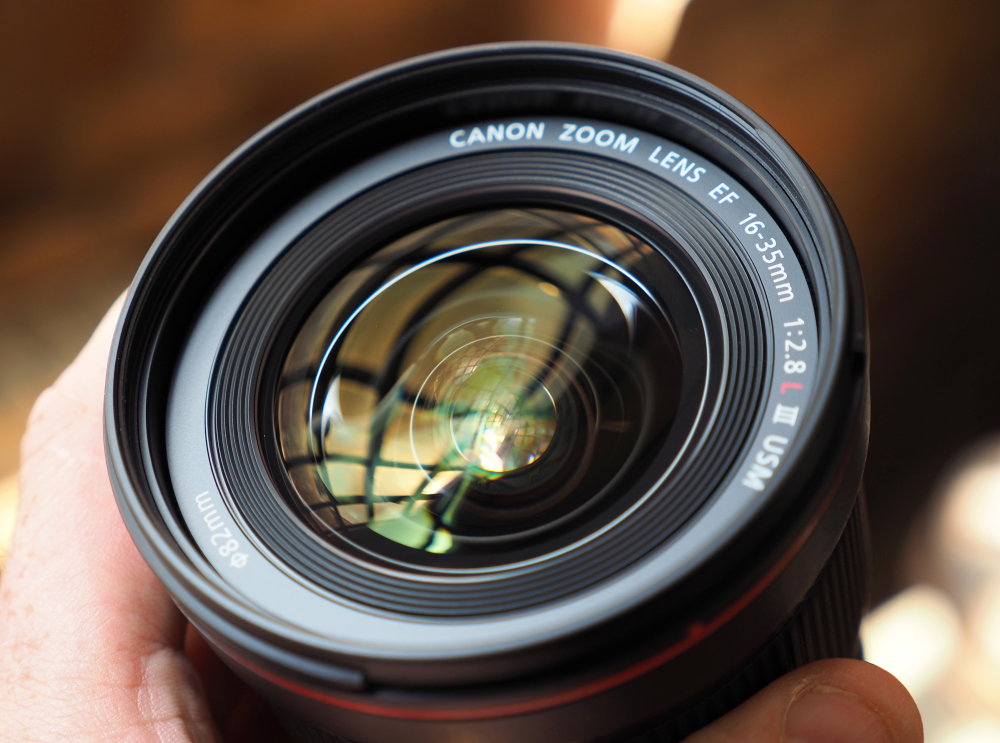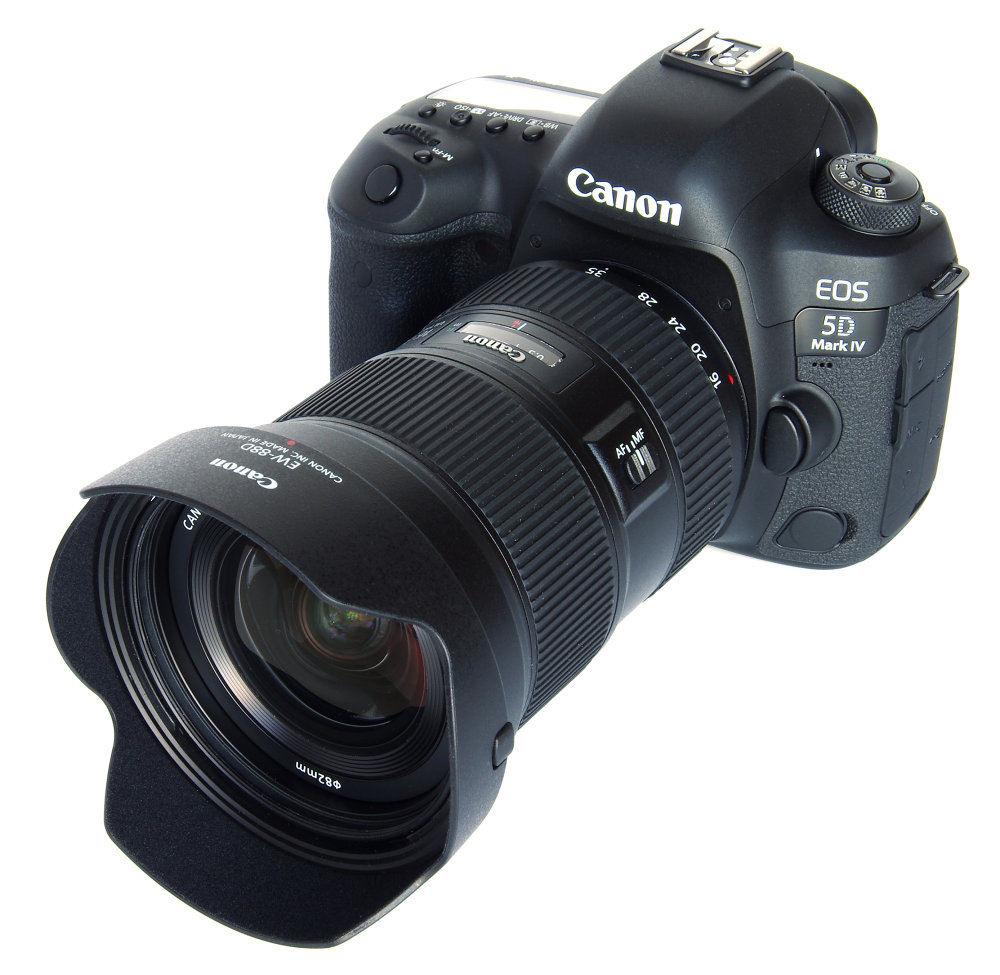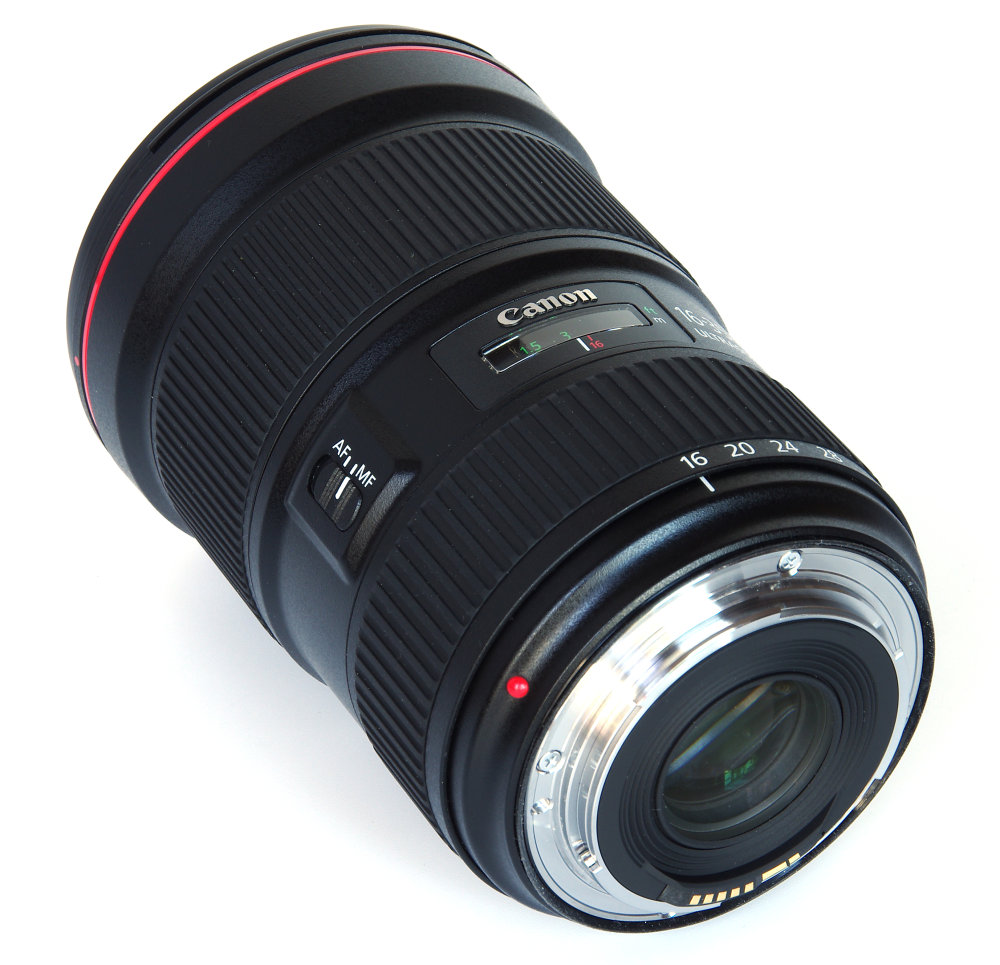Canon EF 16-35mm f/2.8L III USM Review
Canon EF 16-35mm f/2.8L III USM Handling and Features
The lens was coupled with the Canon EOS 5D Mark IV for this review, and the two are a perfect match for each other. The quality of construction is very high and the balance of the combination just about perfect, making the lens feel much lighter than its 790g. The lens is weather sealed, a huge advantage when shooting outdoors. The bayonet lens hood fits precisely and a catch has to be released to remove it, making it secure. There is an 82mm filter thread. It is possible to use filters, but in the case of polarisers it is unfortunate that the lens hood has to be removed to rotate the filter. This is not as efficient as having a removable slot or even a sliding access panel as some other makes provide.
As we move closer to the camera body, we next find the wide and smoothly operating manual focus ring. This operates even when AF is engaged, making full-time manual focus possible. This can be used, for example, to tweak the focus position after AF has been achieved. Focusing is down to 0.28m (0.92 feet) and at 35mm offers a maximum magnification of 0.25x, or 1:4. Focusing is via a ring type USM motor and is fast, efficient and accurate.
There is an AF/MF switch and, behind a small window, a focusing scale marked in feet and metres. There is also an index mark for infrared photography, as IR light focuses at a different plane to visible light unless a lens is specially corrected.
Finally, the zoom ring is also smooth in operation and clearly marked. The markings are very accurate and a particular length can be set with a high degree of accuracy.
The 9 bladed diaphragm gives a more circular aperture than the previous model's 7 blades, aiming to improve the quality of the out of focus areas or bokeh.
Optical construction is 16 elements in 11 groups, with an extremely interesting large-diameter glass moulded double aspheric group at the front of the lens. Traditionally ground aspheric elements are also in the formula, as well as using ultra-low dispersion glass. Coatings are described as sub-wavelength and air sphere, the intent being to reduce any internal reflections or flare to the absolute minimum.
Handling soon reveals this to be a beautiful lens to use. The focal length range is not overly large, but nonetheless covers some very useful areas. 16mm is definitely ultra-wide and 35mm often considered to be a wide standard lens, so there is plenty of scope from vast interiors to street photography.
Dust and moisture sealing are most welcome, but the absence of IS (Image Stabilisation) less so. Fortunately, wider lenses do not have the same problems with camera shake that telephoto designs do, so although still desirable it is not essential. Canon also says that the lens is not compatible with extenders, which is probably not a great loss as this is not the sort of lens that would be routinely used in such a way. Extension tubes can be used at the 35mm setting.
Add your message
Please login here or if you've not registered, you can register here. Registering is safe, quick and free.
photodo Stats
428 MTF tests
74 in-depth photodo reviews
100+ users join each day
Help the lens community by reviewing or rating a lens today via our lens search
Latest Lens Reviews
- Chinon 28mm f/2.8 Vintage Lens Review
- Canon EF 70-200mm f/4L IS II USM Lens Review
- Samyang AF 85mm f/1.4 EF Review
- Sigma 70mm f/2.8 DG Macro Art Review
- Samyang AF 24mm f/2.8 FE Review
- Meike 50mm f/1.7 Review
- Tamron 70-210mm f/4 Di VC USD Review
- Lensbaby Burnside 35mm f/2.8 Review
- Asahi Super Takumar 50mm f/1.4 Review
- Asahi Super-Multi-Coated Takumar 135mm f/3.5 Review



